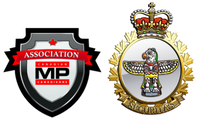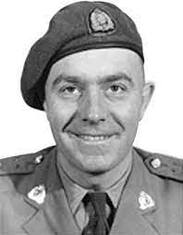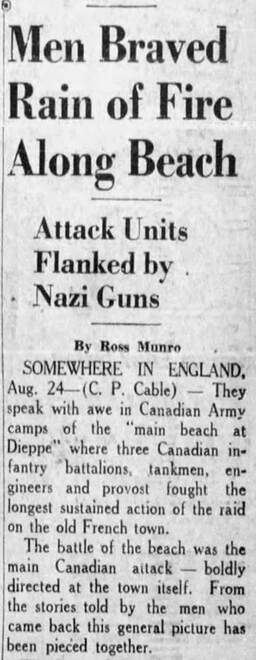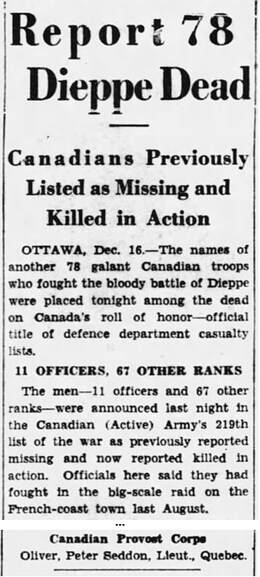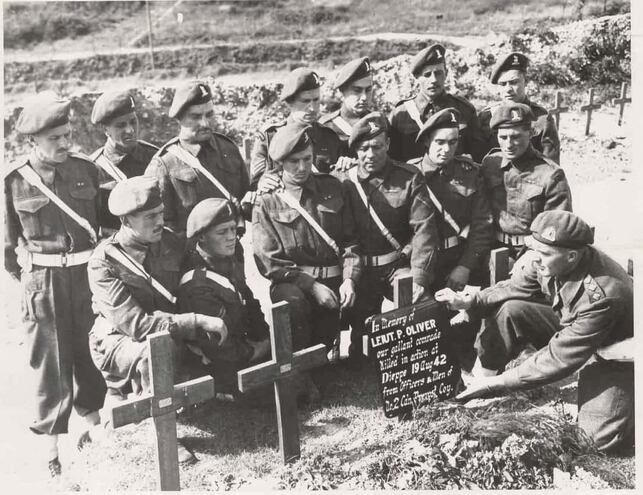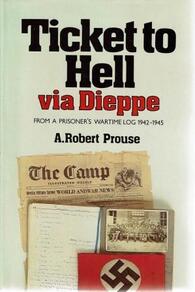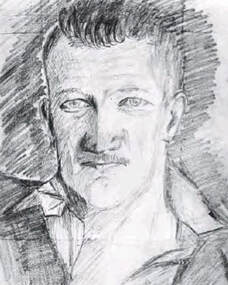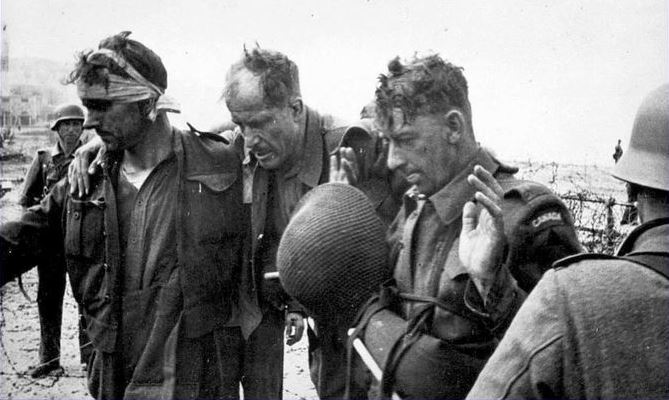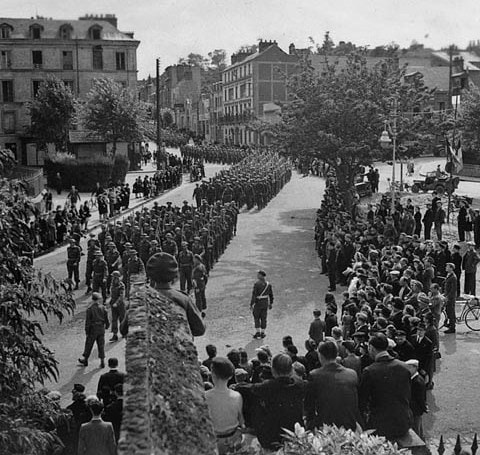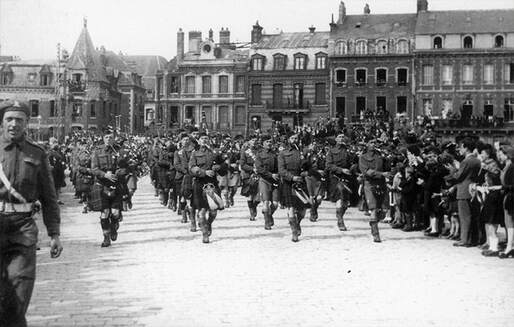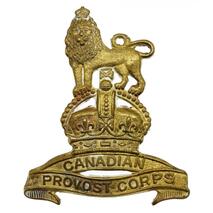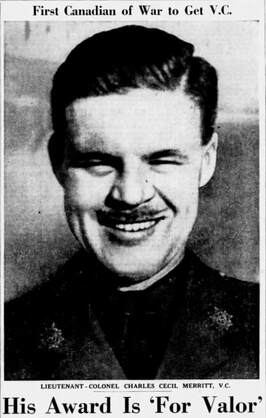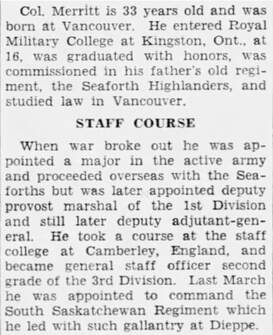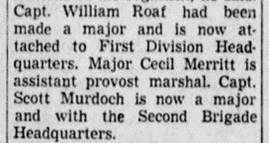Looking Back: The CProC at Dieppe
By Lieutenant-Colonel Paul Thobo-Carlsen (Retired), CMPA Director of History & Heritage.
|
19 August 2022 marked the 80th anniversary of Operational Jubilee—the ill-fated raid on Dieppe. While not often mentioned in the various written histories chronicling this operation, members of the Canadian Provost Corps (CProC) were assigned an important role. Provost support for the raid was carried out by a 41-man contingent from No. 2 Provost Company under the command of Captain Edward Hammond Stevenson.
The operational plan required these provosts to land with the tanks in the initial assault wave so they could direct troops off the beach as they landed and assist the engineers in getting equipment and ammunition moved from the shore as quickly as possible. They were then to set up cordons around the beach and, once the raid was concluded, keep the beach clear and orderly by directing returning troops to the places where they would re-embark on landing craft.[1] As such, the plan called for the provosts at Dieppe to be 'first in, last out'. This would have been a daunting task had the raid gone well. However, a number of factors combined to quickly unravel the operational plan. This included the loss of tactical surprise by the allied raiding force when they ran into a German naval patrol en route, the strong fortifications surrounding Dieppe and dogged resistance by the German defenders, and the rocky beach terrain that effectively halted many of the armoured vehicles that had been able to make it ashore.
|
The main provost task soon turned to personal survival and helping protect fellow soldiers during the chaotic withdrawal. A number of provosts manned machine guns to replace fallen crewmen and otherwise fought as best they could alongside the infantry and engineers near the sea wall. One period newspaper reported that "The battle of the sea-wall was one of the grimmest of the entire operation."[2]
|
The July/August 2022 edition of Legion Magazine contains a never before published article written by Edward Hammond Stevenson titled the "Dieppe Mountie," in which he recounts the provost's participation in the disastrous raid. This article can been viewed on the Legion Magazine website here. |
|
Operational security for the raid was very tight, and only Captain Stevenson and his second-in-command, Lieutenant Peter Seddon Oliver, knew beforehand that their provost contingent was actually going into battle and not just on an other exercise. The remaining troops of No. 2 Provost Company, who were located near Chichester in Sussex, England, did not know the whereabout of the Captain Stevenson's contingent until they began observing considerable air activity heading toward the continent early on 19 August 1942 and eventually heard news on the radio of a raid in Dieppe. A visit later that day from the Assistant Provost Marshal of the 2nd Canadian Infantry Division, Major J. E. B. Hallett, put any doubts to rest. He confirmed that a portion of the No. 2 Provost Company had been committed to battle at Dieppe and ordered the remaining members of the company to proceed to Portsmith and Gosport to control traffic as the Dieppe veterans returned to England.[3]
Unfortunately, only 22 of the 41 CProC members who landed at Dieppe would return to England on the 19th and 20th of August, and at least six of these men would come back wounded. Ironically, for a contingent whose mission included guarding German prisoners taken during the raid, 18 provosts themselves ended up as prisoners of war. Their status was revealed only after a lengthy waiting period (once the prisoner of war notification process had run its course) and those who did not return after the raid were initially listed only as missing.
One more grim confirmation was yet to come. In mid-December 1942, it was officially reported that Lieutenant 'Pete' Oliver had in fact been killed on the beach. An eyewitness saw him being hit by a mortar shell as he stepped off his landing craft, but the official verification of his death from the German side took some months. Lieutenant Oliver was the first member of the CProC to die in battle, as well as the first soldier from Quebec. He is buried at the Dieppe Canadian War Cemetery in Hautot-sur-Mer, France. In honour of his sacrifice, the Oliver Trophy is awarded to the most outstanding Military Police Qualification Level 3 graduate each year by the Canadian Forces Military Police Academy.
For further information about Lieutenant Oliver, see his Military Police Memorial Roll profile page here.
|
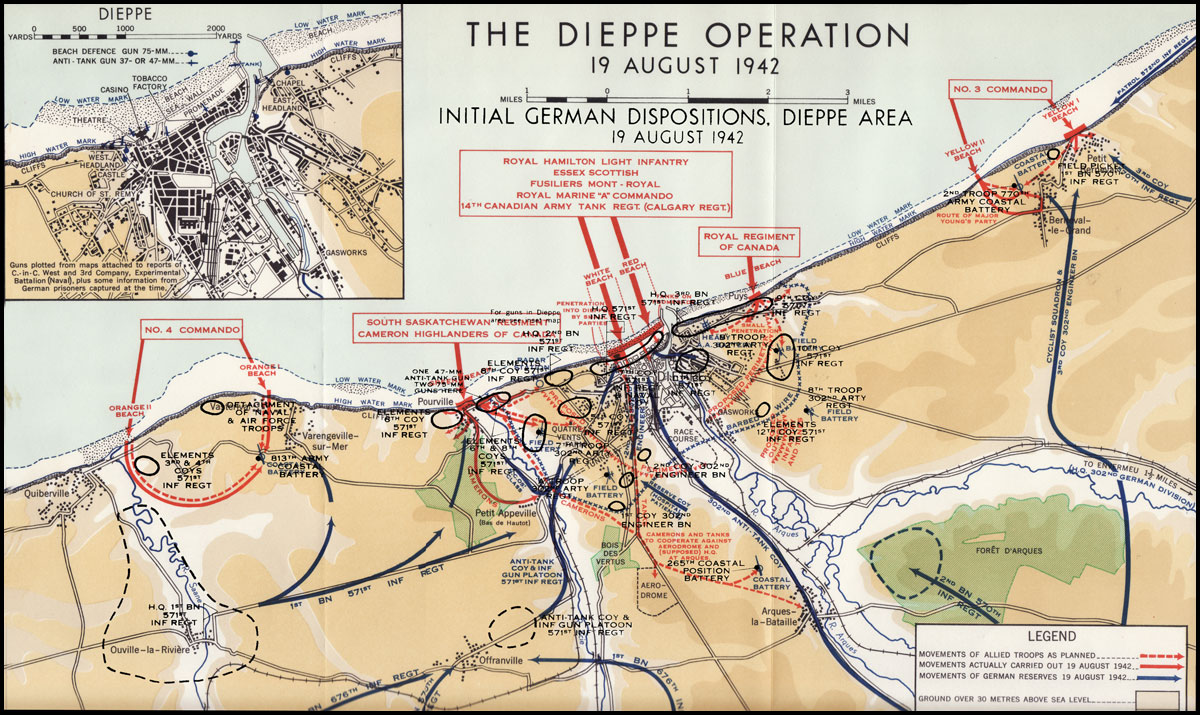
The CProC contingent from 2 Pro Coy landed at the White and Red Beaches along with the tanks of the 14th Cdn Tank Regt (Calgary Regt). The sea wall area where many provosts took refuge and fought is shown in the inset (Map Credit: DND/C. P. Stacey, Official History of the Canadian Army in the Second World War. Volume I, Six Years of War: the Army in Canada, Britain and the Pacific, map 5)
While indeed lucky to be alive, the 18 provosts who were captured in Dieppe faced years of loneliness and privation in German POW camps. At least seven of them were wounded during the raid, some seriously.
|
Corporal Bob Prouse, one of the provosts taken prisoner at Dieppe, subsequently wrote a book based on a log that he secretly wrote and kept hidden during his three years in German captivity.[4]
Prouse's first-person account of his landing at Dieppe provides particularly good insight into the horrendous conditions the troops faced during that fateful dawn raid on 19 August 1942:
|
|
Finally, I got tired of being a sitting duck and ran to the front, stepping over all the bodies. I jumped into the sea yelling, 'lets get the hell out of here.' I was up to my thighs in the water and still don't know how I got ashore without being hit. I threw my body on the course gravel beach and squirmed my way towards the concrete sea wall. I had to get through a mess of of barbed wire already strewn with bodies and finally pulled myself up to the wall where a solder lay dead, draped over the barbed wire that ran along the top. Carefully, I raised my head to try and see on the other side of the wall but quickly withdraw it, for it seemed the whole German army was shooting at me personally.[5]
|
Shortly thereafter Corporal Prouse was wounded by an exploding mortar shell. Fortunately, his steel helmet prevented a potentially fatal head wound and he described feeling a new-found respect for what he previously distained as his 'God-damned tin hat.'[6] After being evacuated to a hospital at Rouen-sur-Seine, where his own shrapnel wounds were treated, he was pressed into service at this hospital where one his duties was to hold down other allied prisoners as they were operated on. He recounts that, "We were the anesthetics, one for each arm and one for each leg. Either there were no anesthetics or the Germans did not want to waste them on us.[7]
Corporal Prouse regained his freedom on 11 April 1945 when troops of the US 3rd Army liberated his POW camp. Almost immediately, he began rounding up his former guards and escorting them to a temporary compound that was set up to collect these new German POWs. The tables had finally been turned.
All members of No. 2 Provost Company who were taken prisoner in Dieppe survived the war.
Dieppe was the first offensive battle of the Second World War in the which the Canadian Provost Corps took part. No. 2 Provost Company could rightly claim its 'baptism by fire' at Dieppe, and its members certainly enjoyed an additional measure of satisfaction when they eventually helped liberate the city in September 1944.
No. 2 Provost Company Personnel — Operation Jubilee (Dieppe)
|
Killed in Action
Lieutenant P. S. Oliver Prisoners of War
LCpl R. Baddley A/LCpl C. E. Buck LCpl R. A. Crawford LCpl R. E. Crosthwaite LCpl W. H. Dignam Sgt A. Edgar A/LCpl J. A. Furnell LCpl H. W. Glynn Cpl F. E. Goldie LCpl W. J. Greer LCpl A. C. Jessop A/LCpl H. W. Manchester |
Prisoners of War
Cpl H. Nelson LCpl J. D. Noble LCpl R. H. Pearson Cpl A. R. Prouse A/LCpl J. Rogers LCpl A. C. Russell Disembarked Wounded
A/Cpl G. W. Oakes A/LCpl W. D. Ramsay Sgt D. E. Sands A/LCpl I. E. Thompson LCpl J. Thevenot LCpl F. J. Wheaton |
Disembarked Unwounded
Captain E. H. Stevenson LCpl D. H. Beattie LCpl F. A. Causton A/LCpl A. R. Cumisky LCpl W. R. Escott A/LCpl R. P. Ford A/LCpl S. W. Gouldie LCpl V. Harding Cpl C. R. House LCpl K. A. MacMillan A/LCpl W. J. C. Martin A/LCpl J. C. O'Connor A/LCpl J. H. Stake LCpl R. C. Tressider |
Disembarked Unwounded
A/LCpl J. C. Webb LCpl E. T. Woods |
(Sources: Richie, Watchdog [9] and the Canadian Provost Corps Association [10])
A number of syndicated Canadian Press news articles in early October 1942 referred to Merritt's previous position title as that of deputy provost marshal (DPM), but this was likely a naming error since at the time DPM positions overseas existed only at Cdn Military HQ in London and at the First Cdn Army HQ. All provost staff officers at the divisional HQs operated under the APM title.
Given Cecil Merritt's pre-war career as a lawyer, and since the CProC only came into existence a few months earlier in June 1940, he was likely appointed as APM 1st Cdn Inf Div on an interim basis and for a relatively short period until a suitable CProC officer at the rank of major was available to take over.
|
|
----------
Notes:
1. Edward Hammond Stevenson, "The Dieppe Mountie," Legion Magazine 97, no. 4 (July/August 2022), 33, https://legionmagazine.com/en/2022/07/the-dieppe-mountie/. Stevenson was one of the original RCMP volunteers who served with No. 1 Provost Company (RCMP) early in the war before being commissioned and taking over command of No. 2 Provost Company. At war's end he held the rank of major and subsequently returned to the RCMP where he eventually rose to become assistant commissioner.
2. Ross Munro, "Men Braved Rain of Fire Along Beach," The Montreal Star, August 24th, 1942, pp. 1 and 4.
3. H. C. Forbes, "Military Police at War: The No. 2 Company Canadian Provost Corps in England and France 1942-1945," The RCMP Quarterly 50, no. 4 (Fall 1985): 24-25.
4. A. Robert Prouse, Ticket to Hell via Dieppe: From a Prisoner's Wartime Log 1942-1945 (Toronto: Van Nostrand Reinhold, 1982).
5. Ibid, pp. 11-2.
6. Ibid, p. 13.
7. Ibid, p. 24.
8. Ibid, pp. 40-41.
9. Andrew R. Richie, Watchdog: A History of the Canadian Provost Corps (Burlington ON: Canadian Provost Corps Association, 1995), pp. 54-55.
10. "In Commemoration of Canadian Provost Corps Personnel who participated in The Dieppe Raid - 1942," The Canadian Provost Corps Association, 1992, http://canadianprovostcorps.ca/history-5.htm.
Notes:
1. Edward Hammond Stevenson, "The Dieppe Mountie," Legion Magazine 97, no. 4 (July/August 2022), 33, https://legionmagazine.com/en/2022/07/the-dieppe-mountie/. Stevenson was one of the original RCMP volunteers who served with No. 1 Provost Company (RCMP) early in the war before being commissioned and taking over command of No. 2 Provost Company. At war's end he held the rank of major and subsequently returned to the RCMP where he eventually rose to become assistant commissioner.
2. Ross Munro, "Men Braved Rain of Fire Along Beach," The Montreal Star, August 24th, 1942, pp. 1 and 4.
3. H. C. Forbes, "Military Police at War: The No. 2 Company Canadian Provost Corps in England and France 1942-1945," The RCMP Quarterly 50, no. 4 (Fall 1985): 24-25.
4. A. Robert Prouse, Ticket to Hell via Dieppe: From a Prisoner's Wartime Log 1942-1945 (Toronto: Van Nostrand Reinhold, 1982).
5. Ibid, pp. 11-2.
6. Ibid, p. 13.
7. Ibid, p. 24.
8. Ibid, pp. 40-41.
9. Andrew R. Richie, Watchdog: A History of the Canadian Provost Corps (Burlington ON: Canadian Provost Corps Association, 1995), pp. 54-55.
10. "In Commemoration of Canadian Provost Corps Personnel who participated in The Dieppe Raid - 1942," The Canadian Provost Corps Association, 1992, http://canadianprovostcorps.ca/history-5.htm.
